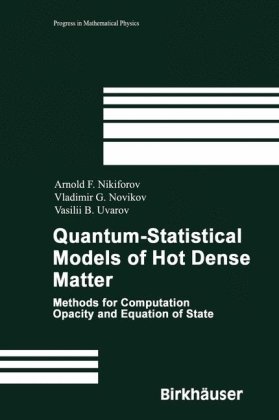

Most ebook files are in PDF format, so you can easily read them using various software such as Foxit Reader or directly on the Google Chrome browser.
Some ebook files are released by publishers in other formats such as .awz, .mobi, .epub, .fb2, etc. You may need to install specific software to read these formats on mobile/PC, such as Calibre.
Please read the tutorial at this link: https://ebookbell.com/faq
We offer FREE conversion to the popular formats you request; however, this may take some time. Therefore, right after payment, please email us, and we will try to provide the service as quickly as possible.
For some exceptional file formats or broken links (if any), please refrain from opening any disputes. Instead, email us first, and we will try to assist within a maximum of 6 hours.
EbookBell Team

4.1
10 reviews
ISBN 10: 3764321830
ISBN 13: 9783764321833
Author: Arnold F Nikiforov, Vladimir G Novikov, Vasili B Uvarov
In the processes studied in contemporary physics one encounters the most diverse conditions: temperatures ranging from absolute zero to those found in the cores of stars, and densities ranging from those of gases to densities tens of times larger than those of a solid body. Accordingly, the solution of many problems of modern physics requires an increasingly large volume of information about the propertiesofmatterundervariousconditions,includingextremeones. Atthesame time, there is a demand for an increasing accuracy of these data, due to the fact thatthereliabilityandcomputationalsubstantiationofmanyuniquetechnological devices and physical installations depends on them. The relatively simple models ordinarily described in courses on theoretical physics are not applicable when we wish to describe the properties of matter in a su?ciently wide range of temperatures and densities. On the other hand, expe- ments aimed at generating data on properties of matter under extreme conditions usually face considerably technical di?culties and in a number of instances are exceedingly expensive. It is precisely for these reasons that it is important to - velop and re?ne in a systematic manner quantum-statistical models and methods for calculating properties of matter, and to compare computational results with data acquired through observations and experiments. At this time, the literature addressing these issues appears to be insu?cient. If one is concerned with opacity, which determines the radiative heat conductivity of matter at high temperatures, then one can mention, for example, the books of D. A. Frank-Kamenetskii [67], R. D. Cowan [49], and also the relatively recently published book by D.
Front Matter
Pages i–xvii
The Generalized Thomas-Fermi Model
Pages 3–28
Electron Wave Functions in a Given Potential
Pages 29–64
Quantum-Statistical Self-Consistent Field Models
Pages 65–105
The Hartree-Fock-Slater Model for the Average Atom
Pages 107–141
Radiative and Thermodynamical Properties of High-Temperature Dense Plasma
Pages 145–283
Interaction of Radiation with Matter
(included in section above or separate if specified)
The Equation of State
Pages 285–336
Back Matter
Pages 337–428
quantum statistical models of hot dense matter
standard model vs quantum physics
quantum mechanics vs standard model
quantum standard model
quantum statistics of ideal gases
Tags: Arnold F Nikiforov, Vladimir G Novikov, Vasili B Uvarov, Quantum, Statistical